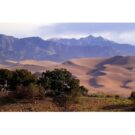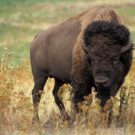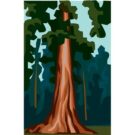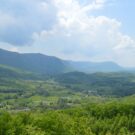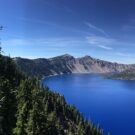Great Sand Dunes National Park and Preserve
by Sandra Merville Hart Over 250,000 people visit Great Sand Dunes National Park and Preserve in Colorado every year. These sand dunes are the tallest in the United States. Unusual surroundings Unusual landscapes surround the impressive sand dunes. Guests find wetlands, snow-capped mountains, aspen forests, grasslands, and alpine lakes. They also see tundra, a treeless area of flat land where the ground is frozen. Sandboarding and sand sledding Slide down a 300-foot sand dune on a sandboard or sand sled, which are specifically made for sand. The sand can reach 150 degrees in summer, so plan to ride in early morning or evening in that hot season. Always wear shoes. Spring afternoons may be windy. Sandboarding, skiing, and sledding are allowed on dunefields away...
Read MoreTallgrass Prairie National Preserve
by Sandra Merville Hart The 10,894 acres of Tallgrass Prairie National Preserve in the Flint Hills of Kansas are almost all that’s left in the United States of tall grass prairies. Only 4% of prairie remains More than 400,000 square miles of prairie existed fifty years ago. Only 4% remain. The rest have been plowed up or destroyed to build malls, roads, and cities. This Kansas national preserve wants to rescue tall grass prairies. Tall grass can grow as tall as seven feet Over seventy species of grasses grow in the Flint Hills. Many of them reach full height — four to seven feet — in September and October. Several Native American tribes including the Pawnee, the Osage, the Wichita, and the Kansa hunted in this area. Controlled fires burn away old...
Read MoreSequoia & King’s Canyon National Park
by Sandra Merville Hart Sequoia National Park is the second oldest national park. It is located in the Sierra Nevada, which means “snowy mountain range” in Spanish. The California park was established in 1890. About 930,000 people visit each year to see the huge mountains, rugged foothills, canyons, caverns, and the world’s largest trees. Over 200 caves have been discovered in the parks. They are different from other caves in that these formed in marble. Mount Whitney is the tallest mountain in the contiguous United States but can’t be seen from park roads. The peaks of the Great Western Divide hide it from west side of the park. For the hearty climber, a day-long hide to the top of Alta Peak allows the hiker to see the top of Mount Whitney...
Read MoreShenandoah National Park
by Sandra Merville Hart Shenandoah National Park, established in 1935, is visited by over 1,000,000 each year. Just 75 miles from Washington D.C., President Herbert Hoover kept a vacation home in Rapidan Camp while in office from 1929 to 1933. Spectacular views of cascading waterfalls, the Shenandoah River, and rolling hills are found in 75 overlooks in the park. Four campgrounds, a lodge, and rustic cabins give visitors a variety of options to spend a few days enjoying the beauty of nature. The only public road in the park is Skyline Drive, a 105 mile drive along the Blue Ridge Mountains. The winding hills make this a challenging bike ride, but the rangers suggest those riding bikes starting before 10 am to avoid high volumes of traffic. If your family likes to...
Read MoreCrater Lake National Park
by Sandra Merville Hart Crater Lake National Park, established in 1902, is a picturesque lake surrounded by two-thousand foot high cliffs in the state of Oregon. This unusual lake was formed by a volcanic eruption over 7,500 years ago. At 1,943 feet deep, it is the deepest lake in the United States. The water is almost entirely rain and melted snow, making it a beautiful blue color that fills visitors with wonder. About 533 inches of snow (44 feet) fall every year at Crater Lake. The biggest snowfall was 879 inches (73 feet) in 1932-33. The snow usually melts by August. Fish were added to the lake but only two species survived: Rainbow Trout and Kokanee Salmon. Fishing is encouraged and no license is required. There is a volcano called Mt. Mazama in the park. You...
Read MoreCarlsbad Caverns National Park
by Sandra Merville Hart Over 300,000 people visit Carlsbad Caverns National Park in New Mexico every year. Over 119 caves lie beneath vast deserts and canyons. Explore the cave Rangers encourage everyone to see the 8-acre Big Room, the main section of the cave. This is the only section that contains a lunch room. From there, tourists can take guided tours or explore certain areas on their own. Guided tours with rangers Park rangers lead several tours. Explore Left Hand Tunnel by the light of a handheld lantern. Go to Slaughter Canyon Cave to find a Christmas tree formation. Bat Flight Brazilian Free-tailed bats fly from the cave at dusk every night by the hundred thousands. Watch this amazing sight during the Bat Flight program at the park’s amphitheater...
Read More

